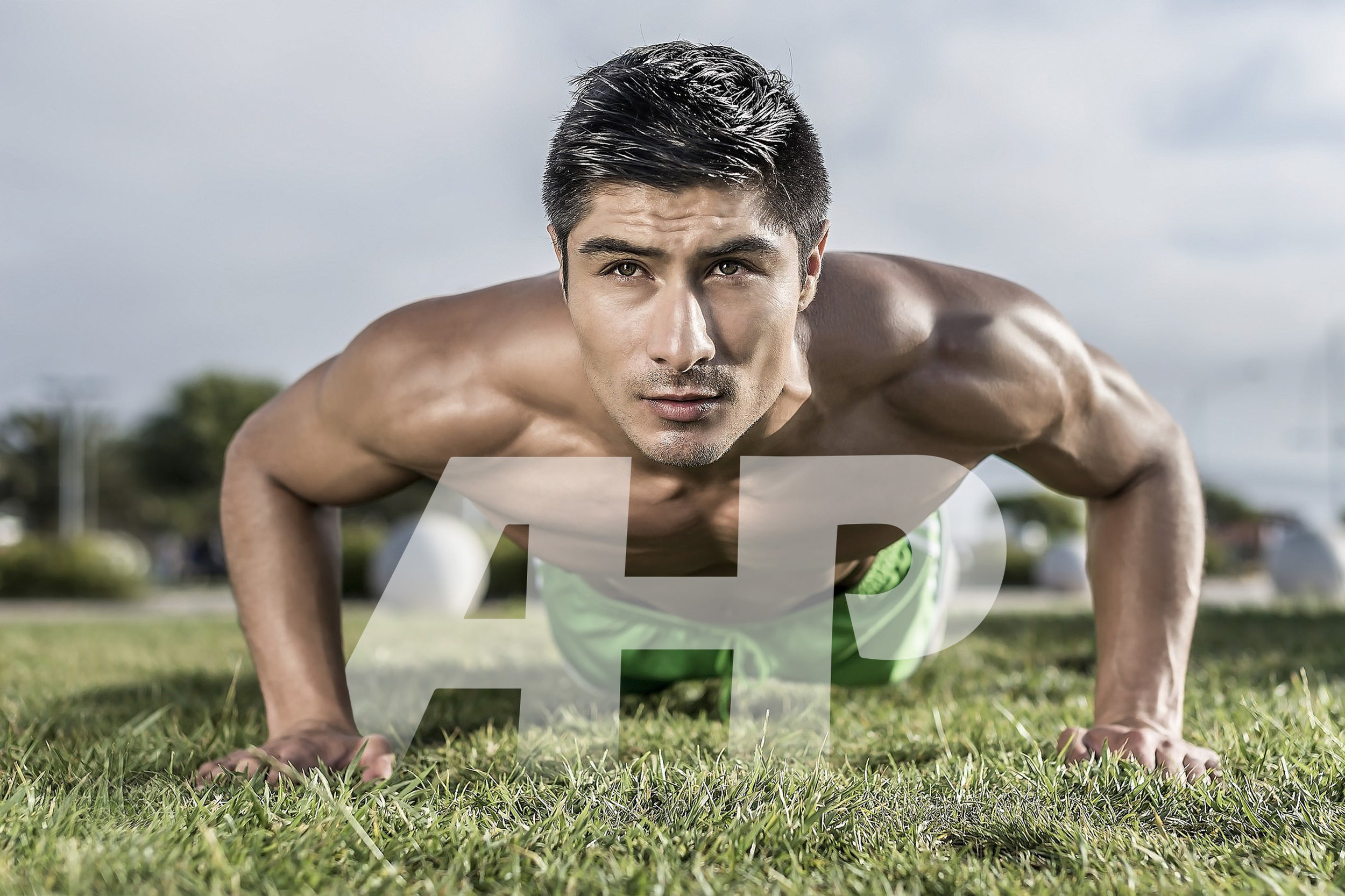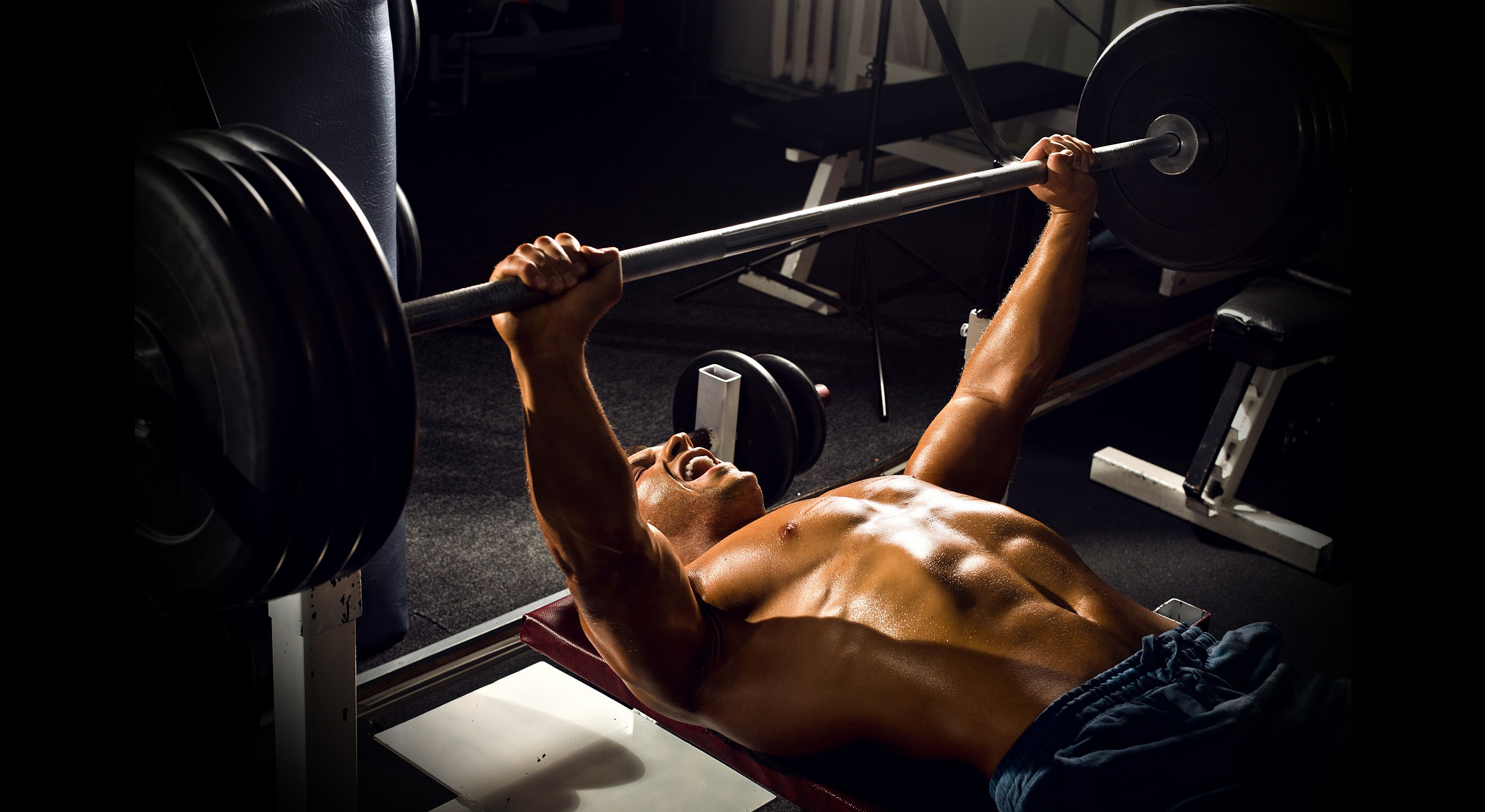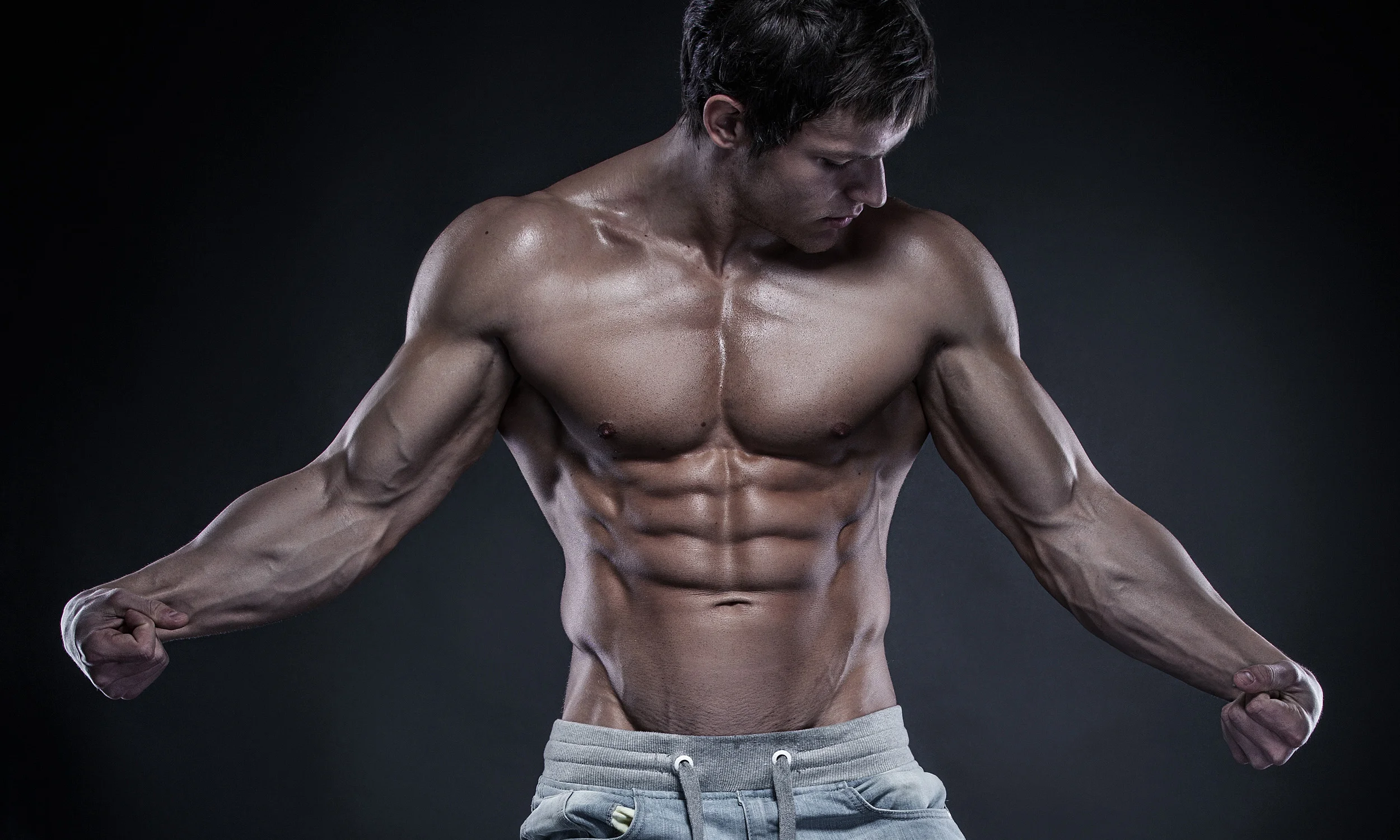10 Cable Chest Presses for Functional Mass & Strength
Dr. Joel Seedman, Ph.D.
The standing cable chest press is one of the most functional horizontal pressing exercises there is. Unfortunately, it’s oftentimes an overlooked and undervalued gem of a movement. Besides providing high levels of tension to the chest, shoulders, and triceps they also hammer the core, hips, and spinal stabilizers. Additionally, they’re quite versatile and adaptable as they can easily be modified in a number of ways. Here are 6 of my go-to cable/band chest presses as I showcase here alongside several of my awesome clients including Leslie Petch, Ben Lai, Elizabeth Yates, and Mike McIntyre.
With that said there are 10 reasons why these standing and kneeling chest presses are so effective.
1. Due to the upright or standing posture involved, cable chest presses are arguably one if not the single most functional horizontal pressing variation there is particularly when it comes to transferability to athletic performance. Most if not all other chest presses involve a supine (laying on your back) or pushup position. While there’s absolutely nothing wrong with these as in fact a majority of the chest presses I program actually fall into such categories, periodically implementing standing presses into your routine is great for transferring the strength and hypertrophy benefits of traditional chest presses into more functional standing positions. In fact, world-renowned strength coach Nick Tumminello makes it a point of consistently using standing cable presses for many of his athletes noting the functional benefits of such movements.
2. Standing and kneeling cable chest & band presses require greater core strength and rotary stability than most chest pressing variations simply because the lifter is unable to rely on a bench or rigid structure to help lock them into position.
3. Cable chest presses are surprisingly joint friendly particularly on the shoulders, elbows, and wrists as well as the pectoral tendons. If you’re looking for a way to crush your upper body pressing muscles while saving your joints these are just what the doctor ordered.
4. The level of constant tension involved with cable chest presses is much greater than most traditional free weight chest presses simply because the strength curve of the cable pulleys more closely matches that of the movement/muscles. Instead of having excessive levels in the stretched position with little tension in the contracted top position, the tension is fairly equal from top to bottom. Although a similar result can be produced from properly crafted variable resistance machines, the lifter would miss out on the stabilization component. Fortunately, cable chest presses provide similar if not greater instability as dumbbells and kettlebells.
5. Besides the greater transferability to functional tasks and athletic performance, standing and kneeling chest presses also expose and address many imbalances throughout the body. That’s because they’re essentially full body movements that require every muscle from head to toe to work in unison. If there are any energy leaks, imbalances, or weaknesses anywhere in the body, you’ll likely notice them.
6. Similar to the above point, standing and kneeling chest presses require high levels of full body tension and spinal rigidity. Besides the associated strength benefits this also has greater transfer to larger compound movements where the lifter must learn to stay incredibly tight and maintain full body tension.
7. Most traditional free weight chest presses involve the lifter laying on a bench or floor with their scapula pinned to a rigid structure. Standing and kneeling cable presses on the other hand allow the scapula to move freely through its natural scapulohumeral rhythm thereby optimizing centration and packing of the glenohumeral joint. This also has a significant impact on improving posture as well as shoulder mechanics and horizontal pressing technique.
8. Similar to the above point, I’ve found cable presses to be highly conducive for reinforcing the all-important elbow tuck while also ensuring the shoulders aren’t over crowded (i.e. over tucking). This is particularly true when the lifter places the handle/cable under the arm (near the arm pit) rather than over/on top of the arm. That is my recommended setup for these exercises although some individuals may find the latter method more comfortable.
9. Cable chest presses are very safe with little room for injury (provided sound form is employed). With this in mind they’re actually quite conducive for taking to failure as there’s really no safety ramifications unlike dumbbells or barbells where the load could fall on the lifter if he or she fails and looses control. With that said, the high degree of mechanical tension, metabolic stress (from constant tension), and ability to reach muscular fatigue/failure (which further enhances the aforementioned hypertrophy mechanisms) makes cable chest presses a legitimate choice for triggering significant strength and hypertrophy. Additionally, the lack of safety issues make them suitable for beginners and advanced lifters alike.
10. Few if any gyms carry dumbbells that go past 100 pounds. For seasoned lifters and larger athletes this can create difficulty when it comes to fully challenging their pressing muscles. While it’s difficult to give an exact ratio, I’ve found that a standard full cable stack is roughly equivalent to a 120-130 pound dumbbell. Thus, cable chest presses provide ample overload even for the strongest iron game warriors, allowing them to use heavier loads than what they might typically be limited to with traditional unilateral and isolateral loading modalities (i.e. dumbbells and kettlebells).
Squatting Chest Press
The squatting chest press is perhaps the single most intense and physically demanding chest exercise I’ve ever performed.
Although these look relatively simple, I assure you that literally every muscle from head to toe will be firing with near maximal effort to lock these in. In fact, after each set not only will you likely be seeing pink elephants but you probably will have a difficult time determining whether your chest, core, or quads are more exhausted. Think of this as a total body pressing exercise that also happens to work the upper body pressing musculature.
The athletic squat stance position using multiple 90 degree joint angles also has tremendous carryover to athletic performance and sprinting performance particularly because the lifter will be forced to stay on the balls of their feet with a natural forward torso lean.
There’s also a tremendous level of balance and full body stabilization required here. If you’re shoulders protract and round over, your body will fall forward. If you lose core tightness or allow your elbow to drift significantly past the plane of your torso beyond a 90 degree joint angle, the weight will pull you backward. To maintain balance and keep everything dialed in you’ll essentially be forced to maintain multiple 90-degree joint angles throughout the body with perfect spinal alignment and full body tension. Read more about proper squat depth here.
Additionally I found that unless you employ an eccentric isometric protocol it will be nearly impossible to perform these. As a result this further dials in the lifter's body mechanics since eccentric isometrics do wonders for enhancing proprioception, kinesthetic awareness, motor control, and body mechanics. Read more about eccentric isometrics here.
Replace Machine Chest Presses With This
Horizontal chest press machines are some of the most popular pieces of equipment in commercial gyms. While I’m not necessarily opposed to their periodic implementation as I’ll occasionally use them myself, a great substitute for the horizontal machine chest press is the seated single arm cable press as shown by my awesome bodybuilding athlete Ben Lai.
There are 4 reasons why this exercise is superior to traditional machine chest presses.
1. Most machine chest presses involve little to no stabilization as the arms are essentially locked into a fixed path. Although this does allow the individual to overload the movement without any attention directed towards stabilization and motor control, a slight degree of instability such as in this movement can actually enhance muscle activation. That’s because it activates more muscle spindles which indirectly recruits more extrafusal muscle fibers via simultaneous gamma motor neuron and alpha motor neuron activation (i.e. increased alpha gamma co-activation via muscle spindle recruitment). That’s a fancy way for saying that the increased proprioception combined with the heavy overload effect forces the body to recruit all necessary fibers in the primary muscles not to mention the smaller stabilizers.
2. Many machine chest presses provide a very limited range of adjustments based on body size and anthropometrics. As a result some machines will feel natural for some while feeling very awkward for others. In fact, it’s not uncommon for various machine chest pressing variations to be somewhat harsh on the shoulder joint for certain athletes. The seated cable chest press on the other hand provides ample freedom of movement since the cable is not locked into a perfectly fixed path. As a result it feels natural for any body size or height including individuals with pre-existing shoulder issues.
3. Although the original Nautilus machines created by the legendary Arthur Jones were initially designed to increase the constant tension effect via an improved strength curve, most companies have bastardized his original concept as a means to cut down on equipment cost and size. As a result most machines, minus a few rare exceptions, have similar strength curves as free weights thereby entirely defeating the purpose of variable resistance machines. The seated cable press, on the other hand, provides an optimal strength curve with constant tension throughout the duration of the movement including the top fully contracted position.
4. So you may be wondering why I simply don’t suggest using the standing or kneeling cable chest press variations shown above instead of the seated variation. So lets clarify. While the standing versions are incredibly effective with high functional carryover most folks who have not adequately trained their core and lower body stabilizers will have difficulty locking the movement into position without the use of a seat or support, oftentimes making it difficult to sufficiently overload. As a result the limiting factor usually ends up being the core stabilizers rather than their upper body pressing muscles.
In these scenarios the ultimate goal should actually be to eliminate such imbalances and areas of weakness so that the standing versions can be used in such a way that the upper body pressing muscles becomes the limiting factor, instead of the core. The seated variation acts as a temporary fix since it doesn’t require as high a degree of full body stabilization and core strength. Therefore, more attention can be focused on the chest pressing component of the exercise. In other words, the seated version tends to isolate the upper body pressing muscles more so than the standing versions. With that said both the standing/kneeling and seated cable chest press variations have their place in a well designed training program.
BANA 2:1 Eccentric Accentuated Chest Presses
Here I’m performing a BANA 2:1 (bilateral assisted negative accentuated) cable chest press alongside my awesome client and national level figure competitor Leslie Petch. Due to the natural feel as well as few if any safety concerns, cable chest presses are quite conducive for applying eccentric overload. Although a spotter could be used to help assist the lifter with supramaximal loading, the lifter can efficiently and safely apply one of my favorite self-regulated eccentric overload methods using the BANA eccentric accentuated protocol. Read more about the BANA method here.
Essentially, what you’re doing is performing the concentric phase of the lift with 2 limbs and the eccentric phase with 1 limb, thereby providing greater eccentric overload during the eccentric or negative movement since the lifter is handling supramaximal loading (greater than their 1RM). The research is pretty conclusive on this topic showing that eccentric overload with supramaximal loads is one of the most effective methods not only for producing substantial levels of functional strength and hypertrophy but also for bulletproofing the joints, tendons, and connective tissue.
Additionally, the level of core activation is inordinately high as the degree of anti-rotation and rotary stability needed to control your body under such extreme unilateral offset positions is near maximal effort. If you’re unable to lock your core and hips in with the standing variations due to the extreme overload or if you’re simply looking to isolate the upper body a bit more, you may want to opt for the seated version as shown by Leslie. Regardless of which variation you choose be prepared to use maximal effort with incredibly high levels of focus and mental engagement.
To learn more about implementing unique chest presses such as these into your routine check out my Complete Templates program.

















































